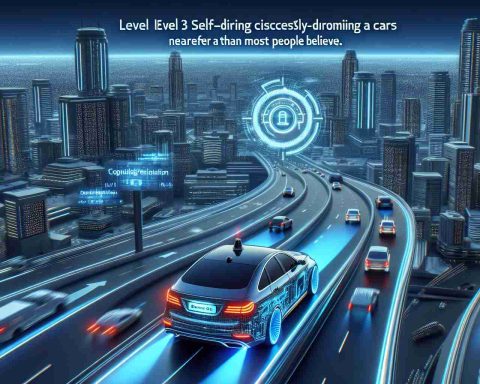Unveiling the Tata Harrier EV: Revolutionizing the Electric SUV Segment
Tata Motors has officially introduced the Harrier EV at the much-anticipated Mobility Show in Delhi, marking a significant step in the electric vehicle landscape. This cutting-edge SUV promises a driving range of 500 kilometers on a single charge, positioning it against formidable rivals such as the Maruti eVitara, Mahindra’s electric XUV, and the Toyota Urban Cruiser EV.
Visually, the Harrier EV preserves the defining shape of its internal combustion engine counterpart, yet it integrates fresh design elements inspired by the brand’s Curvv concept. A striking matte finish, also seen on other stealth series models, enhances its contemporary appeal. Enhanced lighting elements, including innovative LED bars at both the front and rear, contribute to its modern aesthetics.
Inside, the vehicle retains a spacious cabin layout reminiscent of its predecessor, but with a revamped infotainment system and instrument cluster that feature an updated user interface. The Harrier EV is laden with premium amenities like ADAS technology, robust connectivity options, and even a panoramic sunroof to elevate the driving experience. Noteworthy is its summon mode, allowing the vehicle to navigate autonomously without driver input.
Under the hood, this electric marvel is built on the Gen2 architecture and operates with a Quadra-Wheel Drive (QWD) system, utilizing two motors—one on each axle—to provide exceptional performance in various driving conditions. The Tata Harrier EV is set to redefine expectations for electric SUVs in India.
The Broader Implications of the Tata Harrier EV Launch
The introduction of the Tata Harrier EV holds significant implications for society, culture, and the global economy. As electric vehicles (EVs) gain traction in emerging markets like India, this shift may facilitate a broader acceptance of sustainable transportation solutions. With increasing urbanization and a growing middle class, the demand for environmentally friendly vehicles is expected to rise. The Harrier EV’s competitive pricing and advanced features could make electric SUVs more accessible, allowing a larger demographic to embrace cleaner driving options.
From an environmental standpoint, the proliferation of electric SUVs like the Harrier could lead to a reduction in air pollution and greenhouse gas emissions. Studies show that transportation is a major contributor to urban air quality issues, and transitioning to electrified options can significantly mitigate these concerns. Furthermore, as renewables share of the energy mix grows, the environmental footprint of EVs could diminish further, creating a sustainable cycle of energy use.
Looking to the future, the Tata Harrier EV sets a precedent for evolving automotive trends, particularly in autonomous driving technologies. The implementation of features such as summon mode reflects an industry pivot toward increased connectivity and automation. The long-term significance of this vehicle may spark innovation among competitors and challenge traditional automotive paradigms both locally and globally, fueling an electric vehicle revolution that transcends borders and drives economic growth in the clean tech sector.
Experience the Future of Mobility: Tata Harrier EV Drives into the Electric SUV Arena
Unveiling the Tata Harrier EV: Revolutionizing the Electric SUV Segment
Tata Motors has officially introduced the Harrier EV at the much-anticipated Mobility Show in Delhi, marking a significant step in the electric vehicle landscape. This cutting-edge SUV promises a driving range of 500 kilometers on a single charge, positioning it against formidable rivals such as the Maruti eVitara, Mahindra’s electric XUV, and the Toyota Urban Cruiser EV.
Features and Specifications
The Harrier EV is built on Tata’s innovative Gen2 architecture, which is designed specifically for electric vehicles. It boasts a Quadra-Wheel Drive (QWD) system, utilizing dual motors for optimal performance in various conditions. This setup not only enhances the vehicle’s traction and stability but also ensures that it can tackle tough terrains while offering a smooth ride.
– Battery Capacity: The exact battery capacity has yet to be disclosed, but it is expected to support its impressive 500 km range.
– Power Output: Initial estimates suggest a power output of up to 400 horsepower, making it competitive in its segment.
– Charging Options: The Harrier EV will feature fast-charging capabilities, allowing users to charge up to 80% in less than an hour.
Interior and Technology
Inside, the vehicle retains a spacious cabin layout reminiscent of its predecessor, but with a revamped infotainment system and instrument cluster featuring an updated user interface. The Harrier EV is laden with premium amenities:
– ADAS Features: Advanced Driver Assistance Systems like adaptive cruise control, lane-keeping assist, and emergency braking.
– Connectivity: Robust connectivity options, including wireless Apple CarPlay and Android Auto.
– Interior Comfort: Features like a panoramic sunroof, quality upholstery, and ambient lighting enhance the overall luxury feel.
Pros and Cons
# Pros:
– Impressive driving range of 500 km.
– Robust set of advanced safety and connectivity features.
– Attractive design with modern aesthetics.
# Cons:
– Potentially higher price point compared to traditional SUVs.
– Availability and infrastructure for EV charging might be a concern.
Use Cases
The Tata Harrier EV is perfect for urban commutes, weekend getaways, and family trips, thanks to its spacious interior and high-tech features. Families can benefit from the safety features while tech-savvy individuals will appreciate the advanced connectivity options.
Market Analysis
As the electric vehicle market continues to expand, the Harrier EV is poised to capture a significant share, especially in India, where the demand for electric SUVs is growing rapidly. Tata Motors holds a competitive edge due to its established reputation and extensive service network across the country.
# Trends and Predictions
The launch of the Harrier EV aligns with broader trends favoring sustainability and innovation in the automotive sector. As government incentives for electric vehicles increase, manufacturers are predicted to ramp up their EV portfolios significantly. The Harrier EV could serve as a benchmark in performance and technology for future electric models in the market.
Innovations and Sustainability
Tata’s commitment to sustainability extends beyond just creating electric vehicles. The company emphasizes eco-friendly manufacturing processes and the use of recyclable materials in its cars. The Harrier EV not only meets current electric vehicle standards but also positions Tata as a leader in promoting a greener future.
Conclusion
The Tata Harrier EV is set to redefine expectations for electric SUVs in India. With its impressive range, advanced technology, and stylish design, it stands ready to compete with other major players in the electric vehicle sector. For more information about Tata’s evolving electric vehicle offerings, visit Tata Motors.
This innovative vehicle is not just a significant addition to Tata’s lineup; it represents a pivotal moment in the transition toward a more sustainable automotive future.














